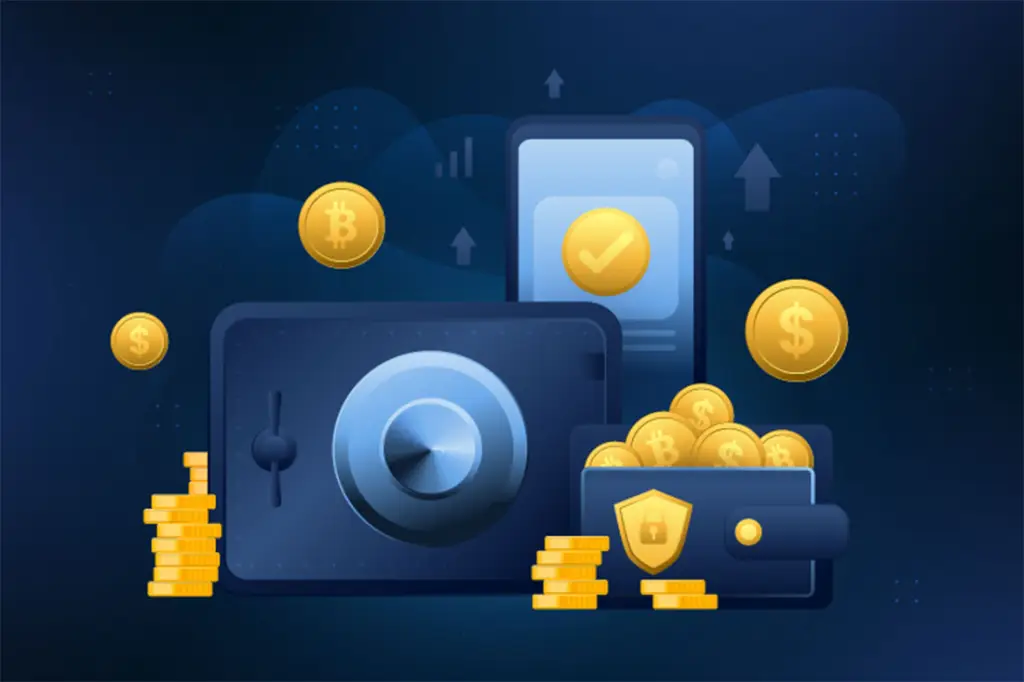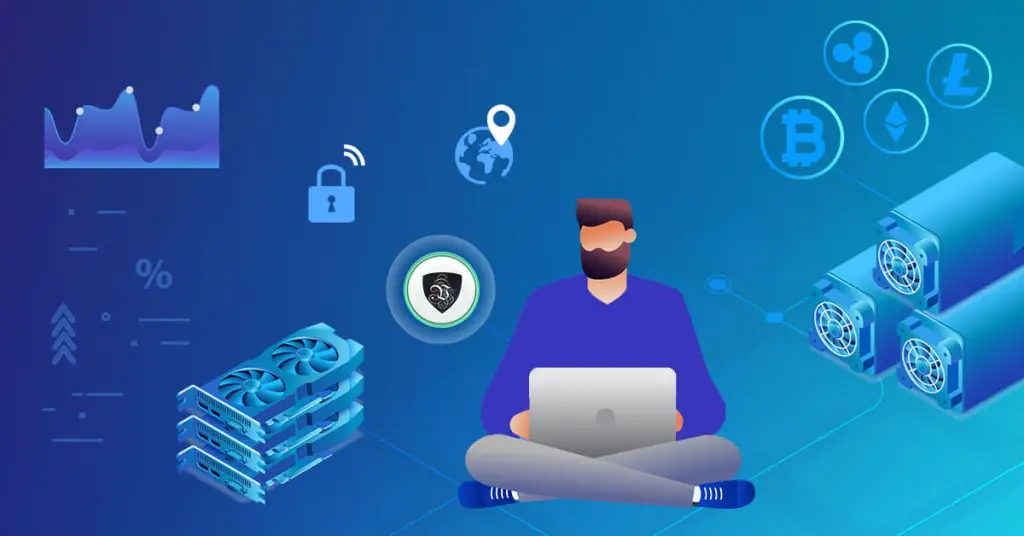For some time now, digital assets are no longer just rare, but have become real tools. Cryptocurrency is no longer exclusively associated with Bitcoin: it is now part of everyday language, investment wallets and government discussions. But not everyone understands where the token comes from, who confirms transactions and why algorithms influence profitability. To do this, we need to understand two fundamental mechanisms of blockchain and their differences: mining and staking. Both methods support the operation of the network, but do so in fundamentally different ways. One requires equipment and energy. The second is tokens and patience.
What is mining: mechanisms of action and role in blockchain
Mining lays the foundation for a decentralised network. An algorithm called Proof of Work (PoW) initiates a competition between computers: the one that finds the solution to a problem the fastest adds a segment to the chain and receives a reward.
The system sets a task: find a number where the hash of the block matches the conditions of the network. The miner starts the calculations and checks billions of options. A computer finds the correct one: the block is validated, transactions are confirmed and the network continues to function.

The process requires:
specialised video cards or ASIC devices;
direct electricity;
cooling;
access to a pool or your node.
The miner not only earns money, but also provides security. The greater the computing power of a network, the more difficult it is to attack it. Proof of work rewards and protects work. Every transaction in BTC or Litecoin goes through this system.
What is staking: principles, application and differences with mining
 Staking is based on a different approach: Proof of Stake (PoS). Here, there is no competition for devices. The network selects a validator based on the volume of frozen coins and other parameters. The more tokens are invested, the higher the probability that a block is confirmed.
Staking is based on a different approach: Proof of Stake (PoS). Here, there is no competition for devices. The network selects a validator based on the volume of frozen coins and other parameters. The more tokens are invested, the higher the probability that a block is confirmed.
In simple terms: how staking works
The wallet sends coins to be “frozen”. The network randomly selects a node to validate a block. After validation – reward. If a validator breaks the rules (e.g. validates invalid blocks), its coins are partially or completely burnt.
Expansion systems are typical for:
- Ethereum 2.0;
- Cardanic;
- Peas;
- Solana.
Algorithms, validators and resilience
Stake testing creates an economic incentive: honesty produces a profit, cheating produces a loss. Validators manage nodes, monitor updates and check availability. The algorithm increases scalability, reduces energy consumption and speeds up blocking.
Differences between mining and staking: key comparisons
The differences between mining and staking go far beyond the technical implementation. The difference between Proof of Work and Proof of Stake lies in the approach to transaction confirmation, role allocation and economic logic. One method is based on energy and computing power, the other on financial participation and trust in the network.
Differences:
- Mining uses the Proof of Work (PoW) algorithm. The essence of this method is to solve a complex mathematical problem using hardware, mainly ASICs or GPUs. In this way, a network participant proves his or her “work” and obtains the right to create a block. Staking works on the basis of the Proof of Stake (PoS) mechanism. The right to validate blocks is granted to those who have frozen a certain number of tokens in the system. Instead of a calculation task, the network is based on the participants’ share of common assets.
- The methods have different tools. The miner uses physical equipment whose power is expressed in hashrates. For staking, all you need is a digital wallet with tokens and, if you manage your own node, server software to ensure business continuity. You can participate in the process without infrastructure by delegating funds to the validator.
- The financial costs of participating in block validation also vary depending on the approach. Mining, unlike staking, requires continuous investment in electricity, cooling and equipment maintenance. Moreover, as networks become more complex, the technology becomes outdated and obsolete. In staking, the fee is to freeze funds that cannot be spent or sold during the freezing period.
- Income is generated in several ways. The miner receives a reward in the form of a fixed reward for the block found and transaction fees. The amount of profit depends on the hashrate, luck and the general state of the network. Staking awards rewards for participation in block confirmation or consensus voting. The amount depends on the number of coins wagered and the protocol policy, including inflation and the amount of commission.
- The risks involved in PoW and PoS are also different. Mining is subject to changes in network difficulty, declines in the market value of coins, technical failures and regulatory restrictions. Staking carries the risk of so-called “slashing”: if the validator breaks the rules, a part of the staked funds is burnt. Furthermore, the freezing of tokens reduces the flexibility of asset management, especially in conditions of high market volatility.
The fundamental difference between mining and staking lies not in the verification method, but in the philosophy: one values calculation, the other trust and participation.
How to choose between mining and staking: differences in strategies and conditions
The choice does not depend on technology, but on means, objectives and circumstances. The differences between mining and staking become apparent when we analyse them not in theory, but in the practical context: initial capital, infrastructure, risk appetite and time horizon of profit expectations.
Who is mining for?
A solution for those who are familiar with the equipment, have the technical basics and are willing to assume the recurring costs. Data processing centres, hash rates, private pools: all these systems require maintenance, data processing and legal registration.
Typical portrait of a miner:
- has a refrigerated space;
- receives preferential or stable electricity (from $0.04/kWh);
- has experience with ASIC or GPU hardware;
- has an initial budget of between $2,000 and $10,000;
- willing to take risks when the exchange rate falls and network complexity increases.
Income is generated by two streams: a fixed remuneration and a variable commission. At the same time, the payback period is directly dependent on cryptocurrency winters, cryptocurrency halving and geopolitical developments.
Who is staking intended for?
A way for those who want to participate in the crypto network without having to buy equipment. The main requirement is the presence of coins. The more tokens you point, the greater your chances of receiving a reward. There are no energy, repair or logistical costs.

Typical strike participant
- Possesses Ethereum, Cardano, Solana or similar assets;
- chooses between delegating and executing a node;
- wishes to receive an income without performing an ongoing activity;
- values stability and predictable profitability;
- is not afraid to freeze funds (7 to 365 days, depending on the project).
For delegation, 5 to 50 tokens (equivalent to $100-1,000) are often sufficient. In this case, validators take a commission (5-10%) and the tokens remain under the control of the user’s wallet.
Examples of coins: what to mine, what to bet on
The cryptocurrency market offers dozens of suitable tokens, but it is important to distinguish between their purpose and architecture.
Mining – benchmarks:
- Bitcoin (BTC) is a classic cryptocurrency based on the SHA-256 algorithm. It requires ASICs.
- Litecoin (LTC) is an alternative with a faster block time. Scrypt algorithm.
- Kaspa (KAS) – GPU mining, high block rate.
- Ergo (ERG) is a power-saving approach specifically for AMD cards.
Stacking managers:
- Ethereum 2.0 (ETH) is the largest PoS network. Minimum 32 ETH for a self-hosted node.
- Cardano (ADA) – active development of decentralisation and delegation without loss of control.
- Solana (SOL) – fast network, high node requirements, but a convenient delegator.
- Polkadot (DOT) is a parachain network with high staking performance.
The differences between mining and staking in the context of coins are reflected in the infrastructure: BTC requires an ASIC, ETH requires tokens and a validator and ADA requires a mobile wallet and one-click delegation.
The future of approaches: where the market is heading
Mining remains the backbone of BTC networks, but more and more projects are moving towards staking. The reasons for this are scalability, sustainability and ecology. Proof-of-stake algorithms consume 99% less energy than PoW. Ethereum has already switched to PoS. Other projects focus on the development of hybrid models: proof-of-activity, proof-of-combustion, proof-of-capacity. The market is gradually shifting from physical costs to digital guarantees.
Main vectors:
- shift to delegated networks;
- development of decentralised hubs;
- zk confirmations implemented by speed;
- reduce barriers to entry for users.
In the future, the differences between mining and staking will no longer be a question of technology, but of accessibility and trust in the network. He who brings stability attracts participants.
What is the difference between mining and staking: the basics
 Both approaches serve the same purpose: maintaining the blockchain. But they do it in different ways. The difference between mining and staking lies in the way the network values participation. The first way is through work. The second is through trust. The investor chooses the approach that suits him best. But in both cases it is about participating in the new economy.
Both approaches serve the same purpose: maintaining the blockchain. But they do it in different ways. The difference between mining and staking lies in the way the network values participation. The first way is through work. The second is through trust. The investor chooses the approach that suits him best. But in both cases it is about participating in the new economy.
 en
en  ru
ru  de
de  ar
ar  es
es  hi
hi  fr
fr  nl
nl  it
it  pt
pt  el
el 










